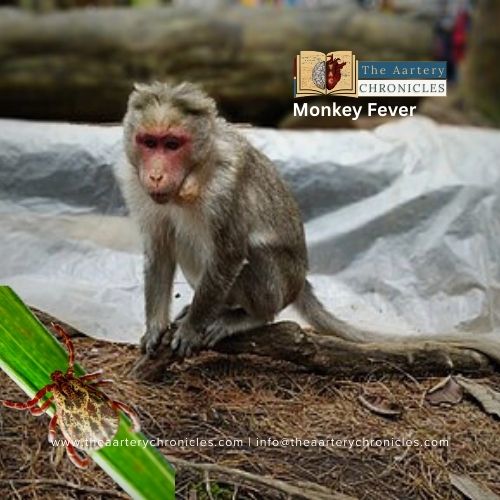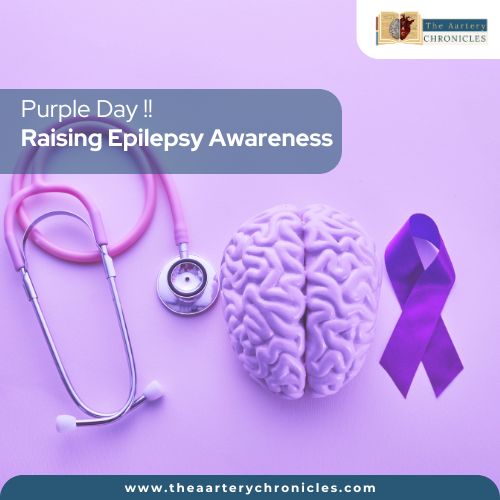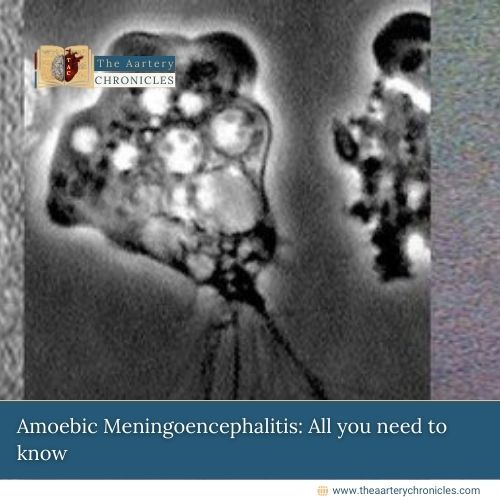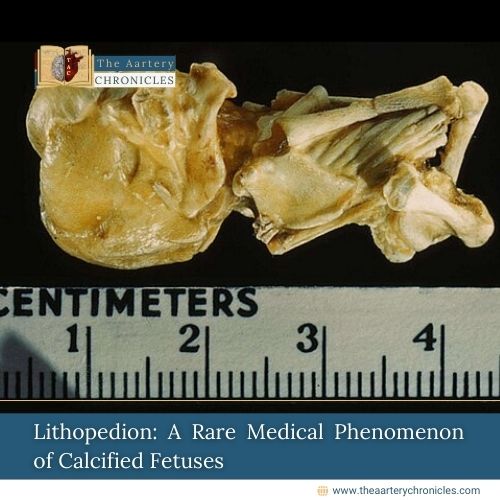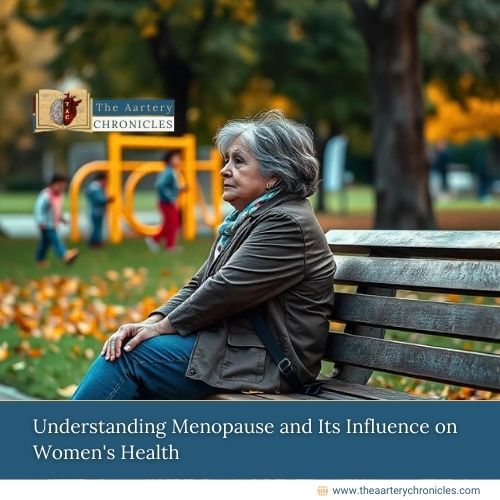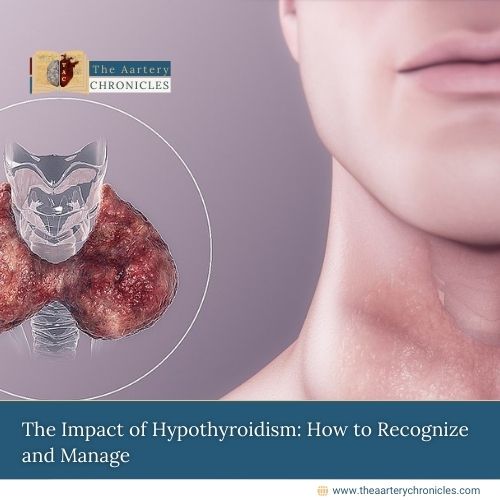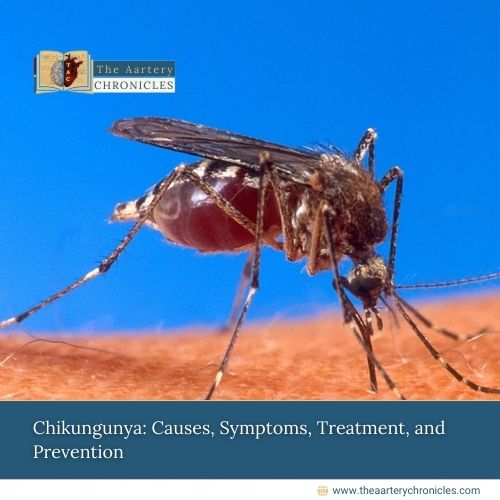
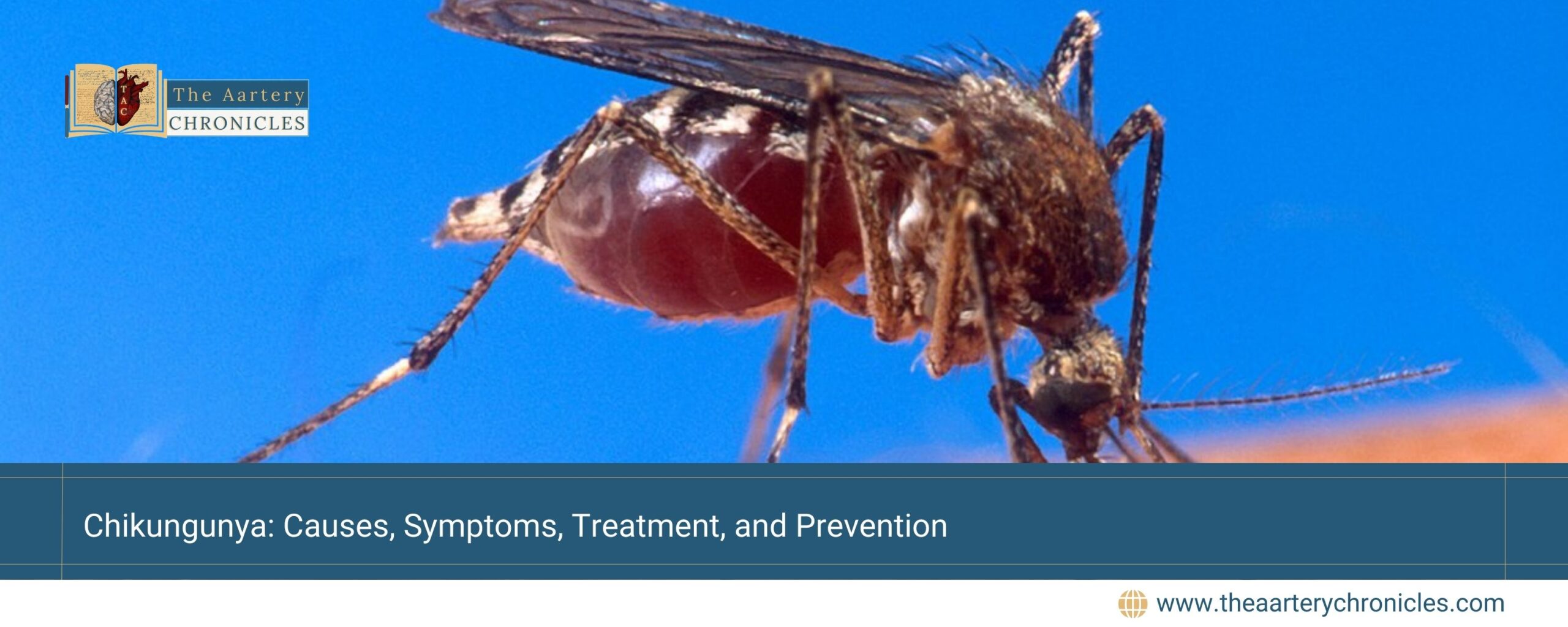
Chikungunya: Causes, Symptoms, Treatment, and Prevention
Introduction
Chikungunya is a viral illness caused by the Chikungunya virus (CHIKV), a single-stranded RNA virus belonging to the genus Alphavirus in the family Togaviridae. It derives it’s name from Kimakonde (language) word which means ‘to be contorted’, aptly reflecting the hunched posture many people adopt due to joint pain.
Once endemic in rural regions of Africa and Asia, outbreaks have also emerged in the Americas, Europe, and islands in the Caribbean, Indian, and Pacific Oceans.
While it is rarely fatal, it can significantly impact the quality of life, emphasizing the need for its awareness and effective management.
How is Chikungunya transmitted: The Role of Mosquitoes
The Chikungunya virus is spread through mosquito bites of Aedes aegypti and Aedes albopictus, which are also responsible for the spread of Dengue and Zika viruses.
- These are active in the daylight hours with heightened activity in the early morning and late afternoon.
- A bite from a mosquito infected with the virus can transmit the virus to a healthy person.
- While there is no direct person-to-person transmission, there is some evidence suggesting that it may be transmitted from a pregnant mother to her fetus and also via blood transfusion.
Symptoms of Chikungunya: What to Watch For
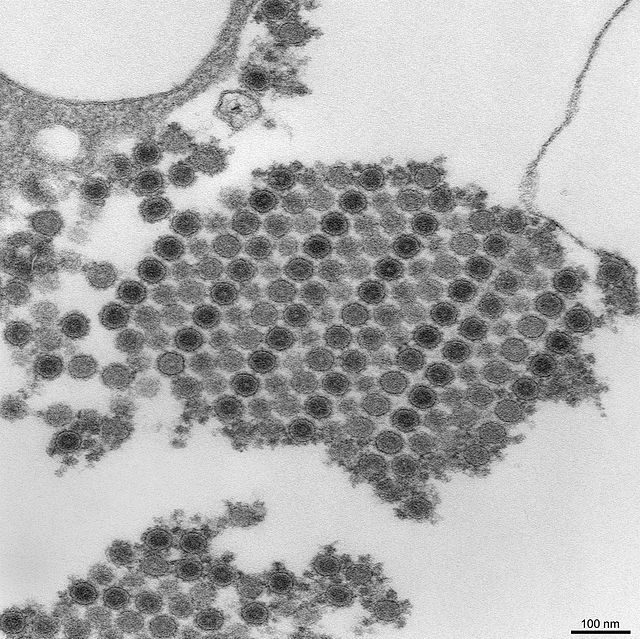
Image Source: Wikimedia Commons
It takes about 2 to 7 days for the symptoms to appear after being bitten by an infected mosquito. These include:
- Fever with chills
- Rash development (on day 2 or 3 of the disease)
- Headache
- Severe Joint Pains (Arthralgia) predominantly involving the smaller joints such as the ankle feet, hands, and wrists but larger joints may not always be spared.
- Muscle pain (Myalgia)
- Photophobia
- Nausea
- Anorexia
- Abdominal Pain
- Bleeding from the skin (petechiae) and epistaxis (bleeding from the nose) may occur in some patients.
The fever usually comes down in a few days, but other symptoms can last for a variable period. In some elderly patients, joint pains can persist for about 6 months to several years. The disease tends to be more severe in newborns, older adults, and those with diabetes or heart conditions. Although most patients recover completely from the infection, there have been occasional reports of eye, heart, and neurological complications.
Diagnosis of Chikungunya
Healthcare provider will inquire about the patient’s symptoms as well as travel history to an endemic place for Chikungunya.
- The blood tests requested may confirm leukopenia (decreased White Blood Cells) and, in some cases, a decreased platelet count
- The virus can be detected in the blood samples during the first week of illness by RT PCR.
- The virus-specific IgM antibody can be demonstrated by ELISA after the first week up to 2 months. These findings will aid the doctor in providing an effective management plan catered to the needs of the patient.
Treatment of Chikungunya: Managing Symptoms and Pain Relief
- The treatment is primarily focused on managing the symptoms as there is no specific antiviral drug available to date.
- Acetaminophen is given to alleviate fever and appropriate analgesics for the relief of joint pain.
- Aspirin or other NSAIDs should not be taken until the diagnosis is confirmed as it can increase the risk of bleeding and even worsen the pre-existing co-morbidities. Hydroxychloroquine is prescribed for refractory arthritis.
- Absolute rest is crucial as physical activity tends to aggravate the condition and prolong the duration of illness. Ensure you consume enough liquids to maintain hydration.
How can Chikungunya be prevented?
To prevent Chikungunya, it is important to avoid mosquito bites. Here are some effective strategies:
- Wear protective clothing – wearing long-sleeved shirts and pants can help minimize skin exposure.
- Apply permethrin – Permethrin-treated clothing and gears should be used. Do not use Permethrin products directly over the skin.
- Insect repellents, containing DEET, IR3535, picaridin, and Oil of Lemon Eucalyptus (OLE) can be applied to the skin
- Use Screens – Use door and window screens to prevent mosquitoes from entering inside the house
- Install mosquito nets – Insecticide-treated mosquito nets should be used if one needs to sleep during the day
- Reduce mosquito breeding sites – Eliminate the sources of stagnant water. Throw out any items that hold water, be it bottle caps, toys, tires, etc. Empty the coolers and flower pots once a week.
- Avoid getting bitten during the first week of illness to prevent further transmission if you are suspected to have the infection
Chikungunya Vaccine: Latest Developments and Research
- In November 2023, the FDA approved a live attenuated vaccine ‘IXCHIQ’ in the United States. It is intended for use in adults aged 18 years and above. Administered as a single dose of 0.5 ml intramuscularly, it is primarily recommended for travelers and laboratory workers who could potentially be exposed to the virus.
- It’s contraindications include immunocompromised individuals and those with a history of anaphylaxis to any component of the vaccine. Caution is advised if it has to be administered to pregnant and breastfeeding women.
Chikungunya’s Toll on Health and Lifestyle
The effects of chikungunya can be detrimental to one’s well-being, be it physical, emotional, or social. Chronic pain that emerges from the disease and the stress of dealing with the illness can lead to fearfulness, anxiety, depression, and irritability. It can be so debilitating that some individuals find it difficult to even dress themselves or wear shoes because of joint pains and swelling. Many people may feel frustrated by their increased reliance on the care of others. It can lead to withdrawal from social activities which can intensify the sense of loneliness and solitude.
Therefore, understanding these dimensions is the key to creating a supportive environment that empowers us to cope with the experiences of our dear ones and promote healing.
Conclusion
Chikungunya remains a significant public health concern in the tropical and subtropical regions due to its debilitating symptoms, particularly joint pain. As there is no specific treatment available, it’s prevention becomes essential. Increased awareness and education about the illness are vital for reducing the transmission.
The IXCHIQ vaccine brings promising potential for further progress. Active research on more such vaccines and therapeutic methods fosters hope for improved outcomes in the future.
- Chikungunya Fact Sheet | World Health Organization
- Chikungunya: Causes and How It Spreads | CDC
- Treatment and Prevention of Chikungunya Virus Disease | CDC
- Chikungunya Vaccine Information for Healthcare Providers | CDC
- Health-related impact on quality of life and coping strategies for chikungunya: A qualitative study in Curaçao | PubMed Central

Dr Varsha Attri
MBBS
I’m a dedicated MBBS doctor with a strong passion for medical research. After graduating from SGRD University Of Health Sciences and working as a medical officer, I realized my passion for medical writing. I thrive on continuous learning and seek to expand my knowledge and skills in the field of Medical Journalism. Outside of medicine, I enjoy reading books and connecting with nature which fuel my creativity and inspire my writing. I’m eager to contribute meaningful content that informs and educates others in healthcare.


